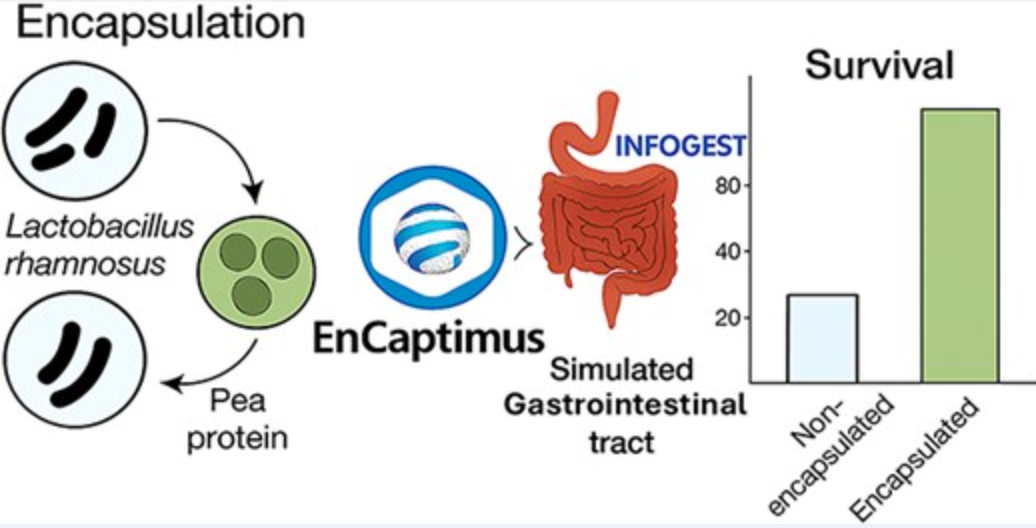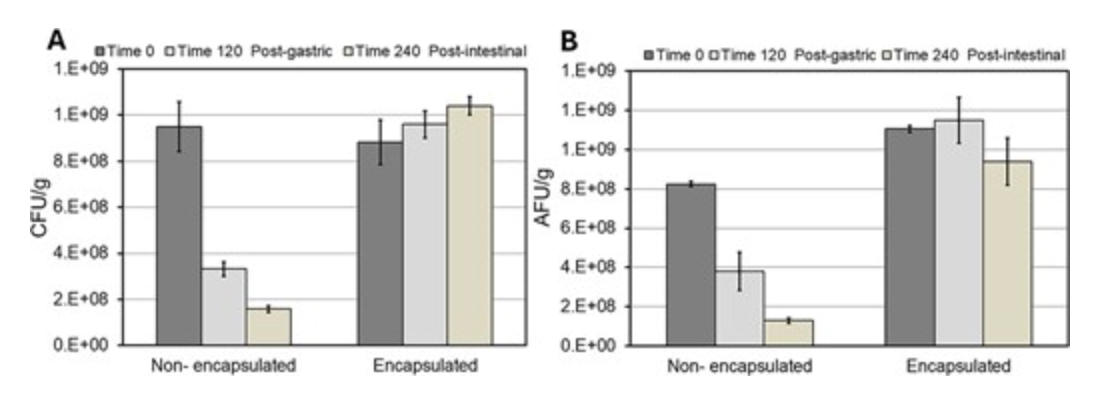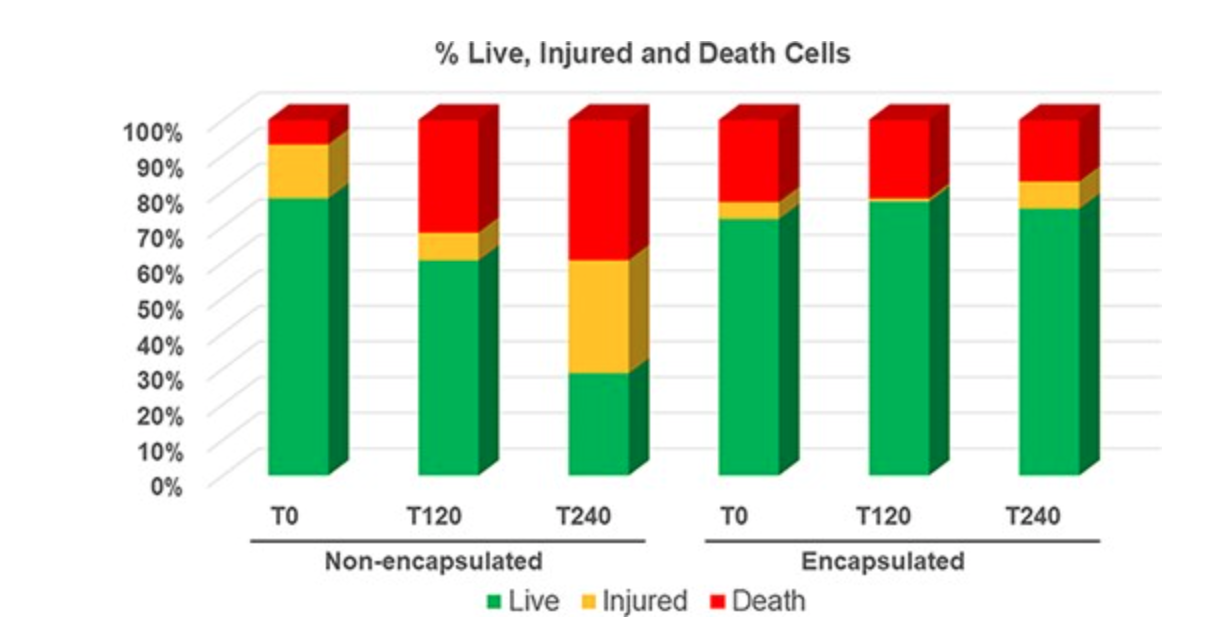Pea protein microencapsulation improves probiotic survival during gastrointestinal digestion
We're thrilled to announce the publication of our latest research, "Pea protein micro encapsulation improves probiotic survival during gastrointestinal digestion," in the International Journal of Food Science and Technology!
This study highlights the exciting potential of using pea protein microcapsules to significantly enhance the survival of probiotics during digestion, paving the way for more effective and sustainable probiotic-fortified foods.
Key Findings: Protection in the Gut
In simulated GI conditions (low pH gastric fluid followed by intestinal fluid), the non-encapsulated L. rhamnosus GG showed a rapid and substantial decline in viability:
Non-Encapsulated: After passing through both the simulated stomach and intestine, less than 20% of the initial probiotic cells remained viable. The majority of the non-protected cells were either injured or dead.
Encapsulated (Pea Protein): In stark contrast, the microencapsulated L. rhamnosus GG exhibited outstanding resilience, retaining over 80% viability after the full simulated digestion process.
This data clearly indicates that the pea protein matrix successfully protects the bacteria during the initial highly acidic gastric phase.
Key Findings: Controlled Release for Maximum Benefit
Flow cytometry analysis revealed the mechanism behind this success: a controlled-release system:
The pea protein matrix acts as a shield, preventing damage to the probiotic cells in the stomach.
Once the cells reached the less acidic simulated intestine, the matrix gradually disintegrated, releasing a high percentage of live, viable cells.
Throughout the entire process, the fraction of injured cells in the encapsulated samples remained consistently low, confirming the superior protection.
We also tested the encapsulation under conditions simulating digestion after a meal, where the stomach's pH is temporarily less acidic (pH 5 and pH 7).
While the non-encapsulated cells survived in higher numbers at a moderate pH 5 compared to the fasting state (pH 2), they still showed a steady decline and a massive increase in injured cells. Furthermore, at pH 7, they eventually declined significantly once exposed to bile salts and enzymes in the intestinal phase.
The encapsulated L. rhamnosus GG consistently retained 70–80% viability across all tested pH levels (2, 5, and 7) following both phases of digestion.
This enhanced stability means that the pea protein microencapsulation significantly increases the likelihood of a high number of viable L. rhamnosus GG cells reaching the colon, where they can deliver their maximum health benefits, regardless of slight variations in the stomach environment.
Key Findings: Maintaining Viability Under Fluctuating Stomach Conditions





